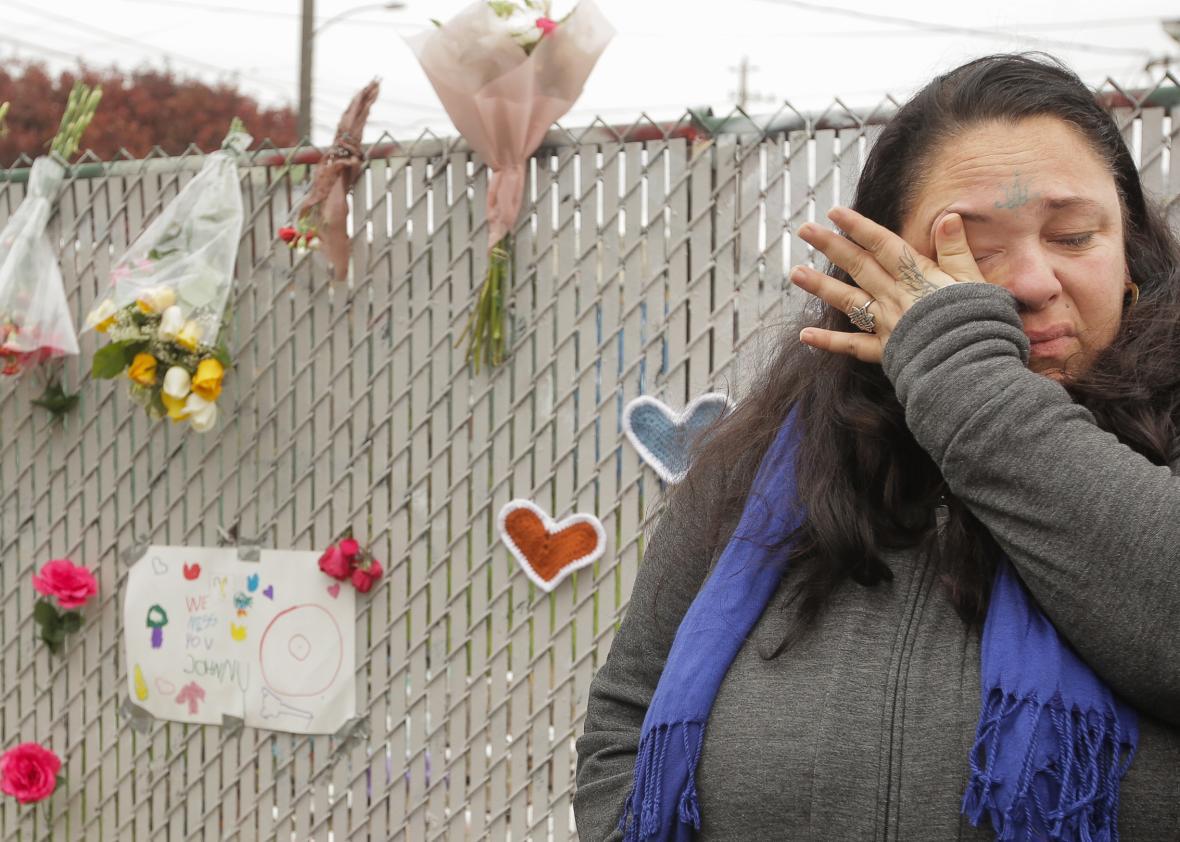The inferno that killed more than 36 people at a converted Oakland, California, warehouse on Friday night was the worst structure fire in the United States in more than a decade.
How did it happen? The short answer is that the two-story live-work building, which was hosting a concert that night, was zoned only for industrial use but was being used as both an event space and a residence. The cluttered, mazelike interior was ablaze in minutes. A criminal investigation is underway, and the Alameda County district attorney said on Monday afternoon that charges are possible and could range from manslaughter to murder.
It was supposed to be a party, but we shouldn’t let that make us think this was a tragedy of excess. This isn’t a story about a bohemian rave that got out of hand. There were no malfunctioning pyrotechnics here. This was a tragedy of lack: a lack of money, a lack of space. A vacuum of responsibility for keeping things safe. And it seems it would have happened had there been 60 people there or 16.
Most of all, the fire at Ghost Ship, as the live-work space was known, is a jarring indictment of America’s impossibly slow response to the rent crisis. Hundreds of thousands of people live in situations that are like Ghost Ship not because they are dangerous, necessarily, but because they are illegal. In too many cities, for too many people, finding a legal place to live is out of reach. And that means that if something is a hazard, they have few options. They have no leverage with their landlords. They have no recourse to the city.
This isn’t 1960s SoHo, where artists reclaimed vast, unwanted industrial spaces for a pittance. Space like Ghost Ship is cheap because it is illegal, but also because it is small and largely unwanted. Rents in Oakland have doubled in five years, leaving tenants frightened and desperate. In the aftermath of the fire, multiple visitors to Ghost Ship described the place as a “tinderbox.” But reporting an unsafe situation to the city or to the press could have made their friends homeless. That had happened before.
Ghost Ship functioned as an underground community center. Its rooms were lined with art, instruments, antique furniture, and self-made structural additions. Informal, noncommercial meeting spaces form a crucial element in the fabric of any city. Ghost Ship, Oaklanders said, was a haven. About two dozen people, including jewelers, woodworkers, and musicians, called it home.
It was also a known hazard, where problems with heat, electricity, and water had frustrated tenants and alarmed visitors. Complaints had been made to the city about blight, illegal residents, and construction without a permit. But when inspectors arrived to investigate, they couldn’t gain access to the interior.
Nihar Bhatt, a promoter in the local music scene, told the East Bay Express that several people had discussed reporting Ghost Ship for being a fire hazard.* “I think they bit their tongues because we desperately need places to gather,” he said.
And to live. Jose Avalos, a woodworker who lived upstairs, made it clear the building was, to him, a refuge not from rules but from rent.
“I am an artist,” he told the Wall Street Journal, “I was living there because there’s no housing that’s affordable in the East Bay.” His rent was $565 a month. The rent for an average one-bedroom in Oakland, the fourth-most-expensive city in the country, is more than $2,000.
Most illegal dwelling units, from co-ops to overstuffed apartments to garages and industrial spaces, don’t pose deadly safety hazards. But they do leave tenants at the mercy of landlords and master leaseholders. To live outside the law you must be quiet.
In August, I wrote about the co-op movement in Boulder, Colorado. Residents of group houses in that city, northwest of Denver, are violating laws that govern neighborhood culture, not safety. But if a safety issue arises, tenants have nowhere to go.
Fear of eviction is not an abstract concern. Last year, a West Oakland videographer started publishing videos of unsafe conditions in the live-work warehouse he inhabited with dozens of other artists. It turned out the landlords didn’t have permits for residential use. The complaints got the attention of the city, which did a building inspection. In January, dozens of residents were ordered to move out after the space was deemed unsafe for habitation.
That kind of story serves as a conflicted, cautionary tale for reporting living problems to the city. But those tenants might also have known that the previous February, two live-work buildings in Oakland caught fire and killed a pair of artists, Davis Letona and Daniel “Moe” Thomas, who had lived in one of them.
As part of the recovery effort, organizers are trying to help tenants bring living spaces up to code. That’s supposed to be the responsibility of property owners, of course, but it’s tenants who are worried. The city of Oakland is going to be under more pressure to crack down on illegal living situations. That could work two ways: It could drive low-income residents and their culture out of the city. Or it could further discourage people from making complaints.
But the problem isn’t a party without a permit. The problem is that artists in Oakland have to live in a building where the water is barely potable, a few miles from the country’s newest concentration of billionaires. Sometimes it is hard to see the victims of America’s housing crisis. Not right now.
*Correction, Dec. 6, 2016: This post initially misidentified Bhatt’s first name as Neil. It is Nihar.
